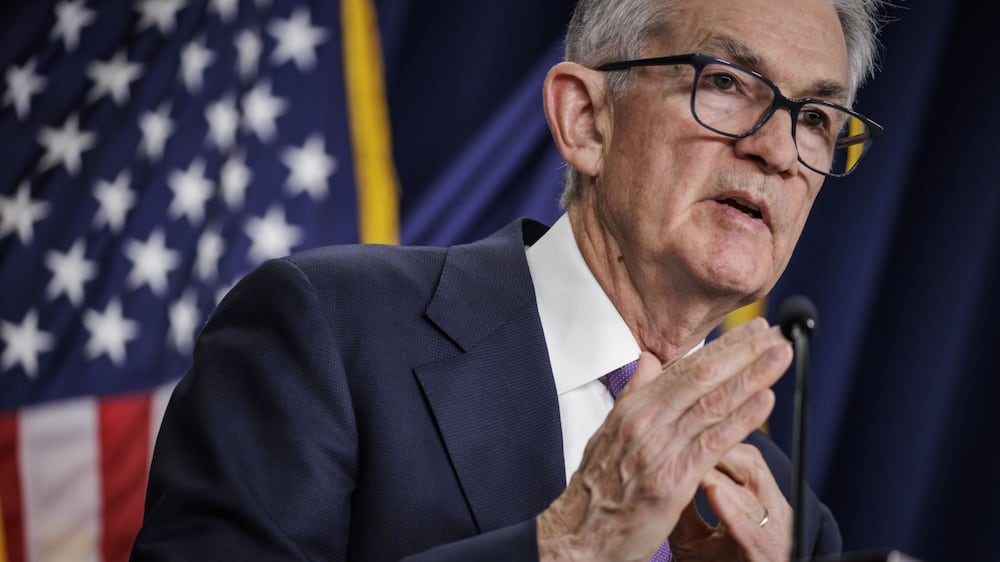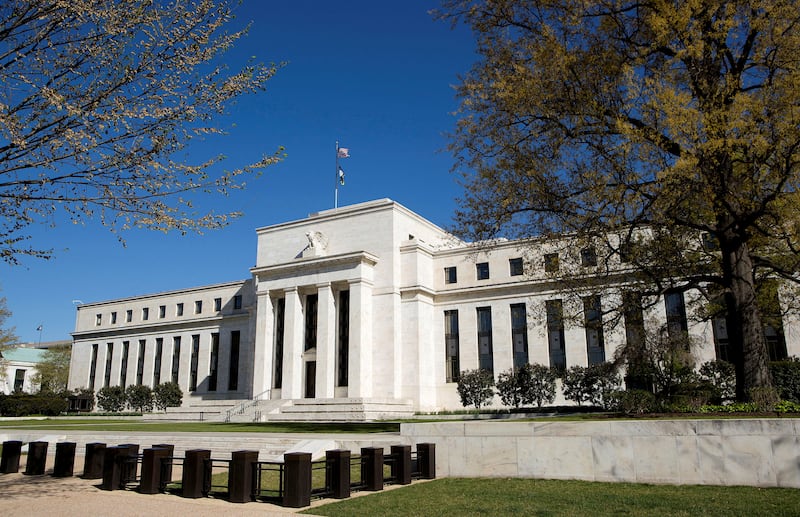The Federal Reserve’s rate-setting committee will meet this week. At the beginning of the year, the futures market was pricing in an almost 90 per cent chance of a 25-basis point rate cut at the meeting but the probability of that happening is now almost zero.
Over the past couple of months, we have seen the Fed push back against market expectations of early and extensive rate cuts this year and that message finally seems to be getting through. Over the past week, the implied probability of the first rate cut in June has dropped from 92 per cent to 67 per cent, driven by disappointing inflation data and a strong US jobs market.
Both consumer and producer inflation in the US came in a little hotter than expected for February, although not alarmingly so. Over the past couple of months, inflation readings suggest that the sharp pace of disinflation we saw last year could be slowing, while the unexpected jump in producer inflation in February provides further reason for caution.
The Fed's preferred metric for tracking inflation rose in January, underlining the central bank's bumpy path towards its long-term 2 per cent target.
Other economic data indicates a slowing economy in the US but not one on the brink of a recession. The manufacturing sector remains under pressure but there is some growth in services. Business investment has slowed, as have retail sales, as consumers pull back on discretionary spending.
US Federal Reserve optimistic, keeping interest rates steady

The labour market remains strong, with jobs growth in February coming in well ahead of expectations (again), although there was some downward revision to previous months’ data. While the unemployment rate rose to 3.9 per cent, this is still low by historical standards and also lower than where the Fed expects it to be by the end of this year.
The Fed kept its target rate unchanged between 5.25 per cent and 5.50 per cent when it last met in January, and suggested rates had reached their peak, leading markets and borrowers to question how long they will remain elevated.
Along with the rate decision this week, the Fed will also release a new set of interest rate projections – the so-called dot plot – as well as updated forecasts for growth, inflation and unemployment over the next two years.
The last dot plot, published in December 2023, showed a median forecast of 75 bps in rate cuts over the course of this year. There is a (not insignificant) chance that the March dots show only 50 bps of rate cuts this year as the median scenario, if a couple of Federal Open Market Committee members are more worried about the inflation outlook than they were three months ago.
Such a development could have a negative impact on equity markets, which have so far shrugged off the grind higher in Treasury yields since the start of the year. The sustained rally in US equity indices has largely been due to better-than-expected earnings and upward revisions to future earnings expectations, particularly for technology companies, but a material repricing of expected rate cuts may curb the enthusiasm.
In contrast to the Fed, ECB officials are sounding more dovish in recent weeks, with several governing council members indicating a “broad agreement” to cut rates in spring. While an April cut is still extremely unlikely, the ECB may be ready to start easing by June, providing that wage growth and services inflation moderate sufficiently.
Certainly, the growth outlook in the eurozone is much weaker than in the US, which could warrant a faster pace of monetary policy easing relative to the Fed, but officials remain concerned that wage growth in the bloc is still too high.
The growth in compensation per employee slowed to 4.6 per cent in the fourth quarter of 2023, the slowest since the third quarter of 2022 but still well above the 3 per cent growth that the ECB believes is consistent with its inflation target over the medium term. As many compensation packages are negotiated at the start of the year, the first quarter's wage data will be key for the ECB going into the June meeting.
For the GCC, it is the Fed’s rate decisions and the timing and extent of cuts that will determine the cost of borrowing for businesses and consumers. Borrowing costs have surged in the UAE and Saudi Arabia since the Spring of 2022, and are at the highest since 2008.
So far, growth in the region has proved relatively resilient to higher borrowing costs, with Saudi Arabia reporting last week that real non-oil gross domestic product grew 4.4 per cent last year. The UAE’s non-oil sector is likely to have expanded about 5 per cent in 2023. However, non-oil growth has been supported by significant public sector investment that has not relied primarily on debt financing.
While Emirates NBD expects public sector investment to remain a key driver of growth over the medium term, private sector investment and consumption would benefit from lower interest rates, particularly as we head into 2025.
Khatija Haque is chief economist and head of research at Emirates NBD






